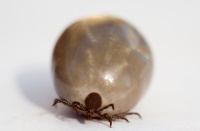Burn injuries can be one of one of the most unpleasant and traumatic experiences one can withstand. Whether it's a small cooking area incident or an extreme burn from a crash, comprehending the stages of burn injury healing is vital for reliable therapy and healing. In this short article, we will dive deep right into the intricacies of burn wounds, their classification, recovery procedures, and necessary treatment techniques.
Understanding Burn Injury Healing Stages: Healing Insights
Burns are identified right into different levels based upon their seriousness, each needing certain clinical focus and treatment. The healing process involves distinct phases that have to be identified to guarantee appropriate management and rehab.
What Are the Different Sorts Of Burns?
Burns are normally categorized into 3 key types:
First-Degree Burns: These affect only the outer layer of skin (skin). Symptoms consist of inflammation, mild swelling, and pain.
Second-Degree Burns: These expand into deeper layers of skin (dermis), causing blisters, serious pain, and swelling.
Third-Degree Burns: These include all layers of skin and might harm hidden tissues. They show up white or charred and can be painless because of nerve damage.
Each kind demands varying levels of clinical treatment and home treatment strategies.
The Healing Refine: An Overview
1. Hemostasis Phase
Immediately after a burn injury happens, the body initiates the hemostasis stage to quit any kind of bleeding. Capillary tighten to reduce blood circulation to the affected area while platelets accumulation to create a clot.
2. Inflammatory Phase
This stage complies with hemostasis and typically lasts for 3-5 days post-injury. It includes:
- Increased blood flow to provide immune cells. Swelling as fluids accumulate in the tissue. Pain as nerve endings become sensitized.
3. Proliferative Phase
Taking place from about day 3 to week 3 post-burn, this stage consists of:

- Formation of brand-new cells through collagen deposition. Re-epithelialization where brand-new skin cells migrate across the wound bed. Angiogenesis-- the formation of new members vessels-- to supply nutrients to healing tissues.
4. Renovation Phase
This last phase can last a number of months to years after a shed injury and is noted by:
- Maturation of collagen fibers. Decreased vascularity as frameworks mature. Potential for mark development depending upon severity.
Importance of Specialized Burn Dressings: Vital Burn Products for Home Care
Proper dressing is critical in handling shed wounds effectively in the house. Specialized melt dressings serve several functions:
- They safeguard versus infections by producing an obstacle against pathogens. They maintain dampness while permitting gases exchange which is crucial for healing. Some dressings include antimicrobial residential properties that protect against infection.
It's critical to pick appropriate dressings based upon burn level and dimension. For instance, hydrogel dressings are often suggested for second-degree burns because of their air conditioning effect.
Scar Administration: Recovering After Major Burns
Once a burn has actually recovered, mark management ends up being crucial for restoring function and look:
Silicone Gel Sheets: Using these assists flatten increased marks over time. Massage Therapy: Encouraging circulation can boost elasticity in mark tissue. Laser Therapies: Physician may advise these for more serious scarring cases.Common False impressions Concerning Burn Treatment
CPR Always Restarts Heart Myth: Debunking Common Burn Treatment Misconceptions
One prevalent myth surrounding Browse around this site mouth-to-mouth resuscitation is that it always reboots the heart; however, this isn't true-- mouth-to-mouth resuscitation raises chances of survival but doesn't guarantee heart task returns to right away after cardiac arrest. Comprehending such mistaken beliefs can help in providing precise emergency treatment during emergencies involving burns or other serious injuries.

FAQs concerning Burn Wound Healing
1. What must I do immediately after sustaining a burn?
Answer: Great the area under running water for at least 20 mins and cover it with a clean cloth or specialized clothing if necessary.
2. The length of time does it take for burns to heal?
Answer: Recovering times differ by melt level; first-degree burns usually recover within a week while second-degree burns can use up to three weeks or even more relying on severity.
3. When must I look for medical interest for a burn?
Answer: Seek professional aid if you have second-degree burns larger than 3 inches or any type of third-degree burns, despite size.
4. Can I utilize ice directly on a burn?
Answer: No, applying ice directly can cause additional skin damages; usage cool (not cold) running water instead.
5. Is there any reliable natural remedy for burns?
Answer: Aloe vera gel has calming properties that might assist with minor burns but consult healthcare providers concerning considerable injuries.
6. Exactly how do I know if my burn is infected?
Answer: Indicators include increased inflammation, swelling, pus discharge, fever, or worsening discomfort; seek prompt medical suggestions if you presume infection.
Conclusion
Understanding shed wound recovery stages is essential not simply for individuals however additionally caretakers who provide support during recovery phases. Expertise about specialized treatments-- like Local First Aid Training Sunshine Coast specialized dressings-- and aggressive scar monitoring considerably affects long-lasting end results after significant burns occur.

Through understanding campaigns that stress safety around usual threats like campfires or kitchen area devices-- such as curling irons-- we can prevent lots of events prior to they take place! By understanding exactly how to respond with efficient first aid abilities (like those educated in HLTAID012 courses), you encourage yourself with valuable devices that shield lives throughout emergency situations entailing burns or other major injuries.
In summary, expertise truly is power when managing possible emergencies associated with burns-- from recognizing therapy methods like chemical or electric burns first aid standards down through different child-centric difficulties seen within education and learning settings-- every detail matters in guaranteeing safety!
This detailed guide aims not just to educate however also inspire confidence in managing complex scenarios efficiently-- nevertheless-- avoidance combined with prompt treatment saves lives!